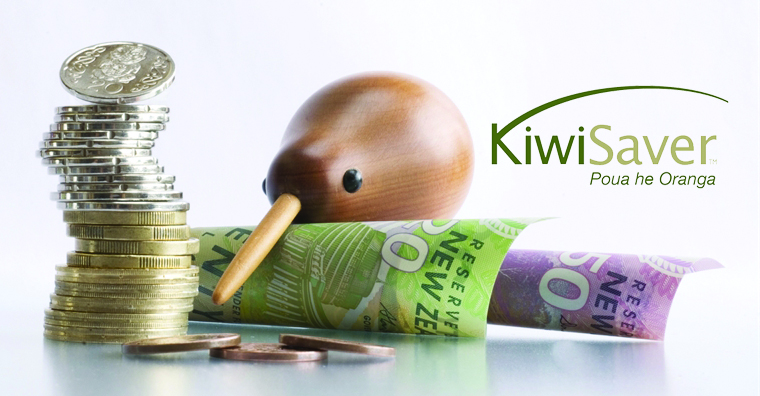5 Tips to Boost your KiwiSaver First Home Deposit

Buying your first home can be an exciting, yet daunting, prospect. One of the biggest hurdles to overcome is the deposit required to secure a mortgage. For many Kiwis, being able to make a one-off withdrawal from their KiwiSaver for a home deposit enables them to reach their home-buying dreams.
DISCLAIMER: This information is not intended as financial advice or a recommendation. It does not take into account your individual needs or financial situation. We recommend you always seek independent legal and financial advice.
Here are five tips for boosting your KiwiSaver for your first home deposit:
 Increasing your contributions is one of the simplest and most effective ways to boost your KiwiSaver balance.
Increasing your contributions is one of the simplest and most effective ways to boost your KiwiSaver balance.
Currently, the minimum contribution rate is 3% of your gross (before tax) salary or wages, but you can choose to contribute up to 10%. Increasing your contributions can make a significant difference in the long run. And in addition to your contributions, employers are required to contribute close to 3% of your gross salary.
For example, let's say you earn $50,000 per year and contribute the minimum 3% to KiwiSaver. Over five years, you will have saved around $9,000. However, if you increase your contributions to 8%, you will have saved almost $24,000 over the same period.
Check out this handy KiwiSaver Calculator from Sorted.co.nz to get an idea if you're on track to achieve your goals.
To change your contribution rate …
- If you are employed: Speak to your employer - notify them in writing of the change, or complete a new KS2 form (which you can get from your employer)
- If you are not employed (eg. self-employed or not working): Contact your KiwiSaver provider.
 Review your KiwiSaver and make sure you're with the right provider and in the right fund for you.
Review your KiwiSaver and make sure you're with the right provider and in the right fund for you.
It's essential to review your KiwiSaver settings and ensure that you are in the right fund. Different funds have varying levels of risk and return, and fees, so it's crucial to choose one that aligns with your investment goals and risk appetite.
For example, if you're looking to buy a home within the next few years, you may want to choose a conservative or balanced fund with lower risk. On the other hand, if you have a longer time horizon, you may be comfortable with a higher risk fund with potentially higher returns.
To help you choose the right type of fund for you, check out Sorted's KiwiSaver Fund Finder.
KiwiSaver Review
To help confirm that you have optimised your KiwiSaver for your first home deposit, book a free 15min chat with our financial adviser, Dustin Lindale. In this review we'll:
- Make sure your KiwiSaver fund is optimised to your homeownership goal.
- Help you understand how long and how much you need to save to get to your first home deposit goal.
Once you’ve decided on a new fund, it’s easy to switch, whether this is to an entirely new provider or to another fund with your current provider. To join another KiwiSaver provider, simply contact them directly and they’ll do most of the work to get everything sorted for you. To switch to another fund with your current provider, you maybe able to do this online. Check out their website, or give them a call.
 Making additional voluntary contributions can help boost your KiwiSaver balance.
Making additional voluntary contributions can help boost your KiwiSaver balance.
You can do this by making lump-sum payments or setting up regular contributions outside of your regular KiwiSaver contributions.
These additional contributions can be especially beneficial if you have a lump sum of money from a windfall, inheritance, or bonus at work. Even small regular contributions, such as $20 per week, can add up over time.
 Ensure you're paying the correct amount of tax on your KiwiSaver contributions.
Ensure you're paying the correct amount of tax on your KiwiSaver contributions.
This can be especially important if you're self-employed or have multiple jobs. To work out the Prescribed Investor Rate (PIR) that applies to you, go to Find my prescribed investor rate on the IRD website. Once you've worked out your PIR, check with your provider to ensure they've got the correct rate loaded.
If you're paying too much tax, you may be missing out on potential returns on your contributions. On the other hand, if you're not paying enough tax, you may have to pay the difference at the end of the tax year.
 Maximise the member tax credit of $521 per year (free money) by ensuring you're contributing enough.
Maximise the member tax credit of $521 per year (free money) by ensuring you're contributing enough.
The government offers a member tax credit of up to $521 per year to KiwiSaver members who contribute at least $1,042.86 per year (by mid June). This is essentially free money, so it's important to ensure that you're contributing enough to receive the full credit.
For example, if you contribute $1,000 per year to KiwiSaver, you'll receive a tax credit of $500, effectively boosting your savings by 50%. So even if you’re unable to contribute the whole $1,042.86 per year, you’ll still get 50 cents for every dollar you do put in.
In conclusion, buying your first home can be a challenging process, but your KiwiSaver account can be a valuable tool to help you achieve your goal. By following these five tips, you can boost your KiwiSaver balance and get closer to your dream of owning your first home.
DISCLAIMER: This information is not intended as financial advice or a recommendation. It does not take into account your individual needs or financial situation. We recommend you always seek independent legal and financial advice.


